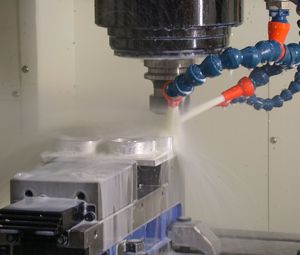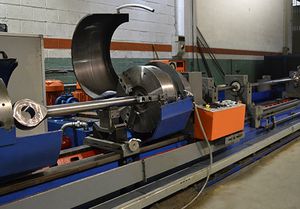
- Machine-tools
- Machining Center
- Steel die sinking EDM machining
- GESTION DE COMPRAS
Aluminum die sinking EDM machining stainless steelcoppersteel






Add to favorites
Compare this product
Characteristics
- Treated material
- aluminum, stainless steel, copper, steel
- Applications
- for aeronautics, automotive, for electronics, for the nuclear industry, for telecommunications
- Certifications
- OHSAS 18001, ISO 9001, ISO/TS 16949, ISO 14001
Description
EDM or Electric Discharge Machining is a machining process, which consist on remove material from work-piece by electric discharges. The electrode is a very important part of the process. It is a good conductor. It is coated with graphite to improve wear resistance. The size and shape of this piece can be quite varied.
During the process, it generates an electric arc between the work-piece and the electrode. This arc reaches a high temperature that produce a crater on the work-piece to develop the final component.
To carry out this process usually the two parts, electrode and work-piece, are immersed in a dielectric (electrically nonconducting) liquid which is circulated to flush away debris and permit a higher control of machining temperature.
EDM can be carried out using two different types of processes. Sinker EDM or Wire EDM.
Sinker EDM: Electrode and work-piece are connected to power supply. Between electrode and work-piece there is an electrical potential. Sparks erode material.
Wire EDM: In this type of process is used a thin single-strand metal wire. It can cut a very complicated shapes. Thin single-strand metal wire is normally brass.
Catalogs
No catalogs are available for this product.
See all of GESTION DE COMPRAS‘s catalogsRelated Searches
- Machining service
- Milling machining
- Metal milling machining
- ISO machining
- ISO 9001 milling machining
- Automotive milling machining
- Small series milling machining
- Medium series milling machining
- Stainless steel milling machining
- Steel milling machining
- Aluminum milling machining
- Large series milling machining
- Electronic milling machining
- Drilling machining
- ISO 14001 milling machining
- Metal drilling machining
- ISO 9001 drilling machining
- Copper milling machining
- Small series drilling machining
- Threading machining
*Prices are pre-tax. They exclude delivery charges and customs duties and do not include additional charges for installation or activation options. Prices are indicative only and may vary by country, with changes to the cost of raw materials and exchange rates.




